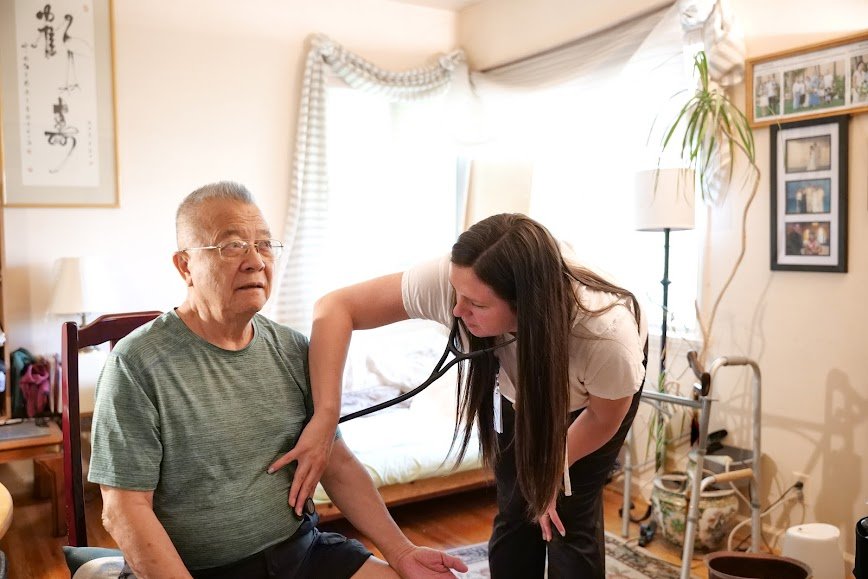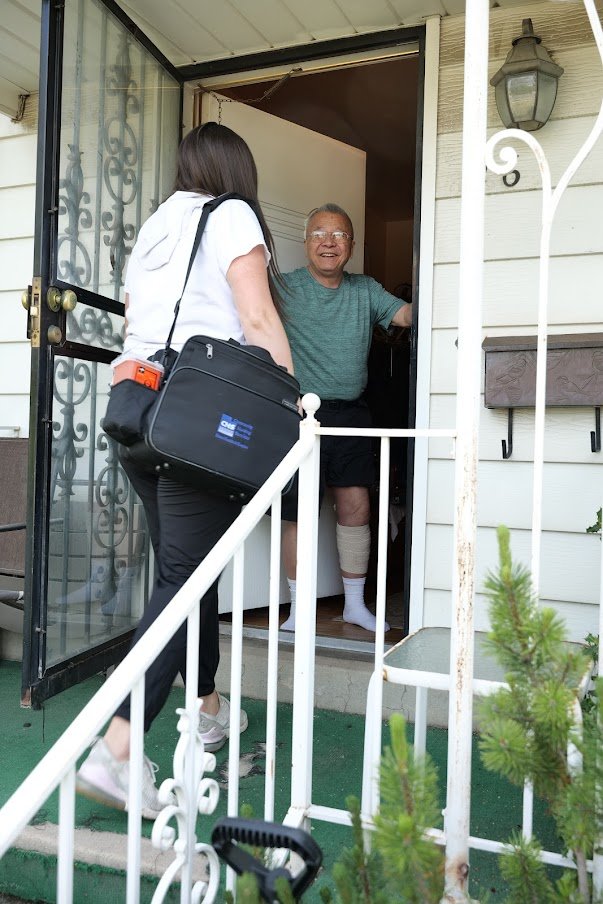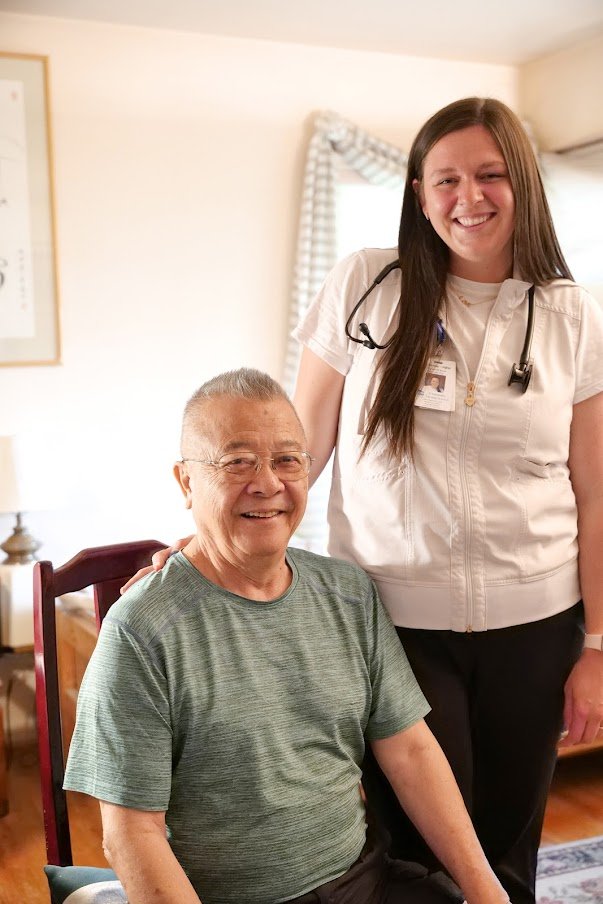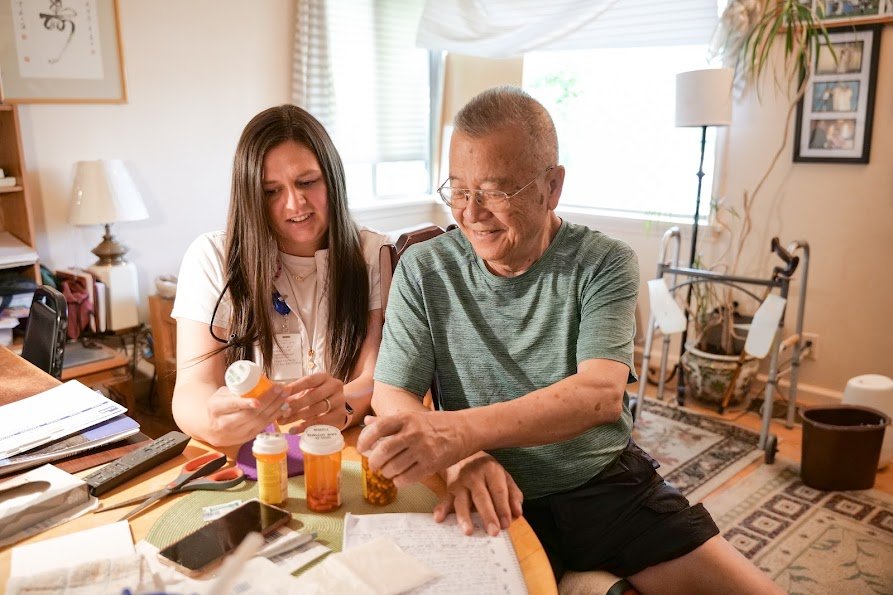A Unique Partnership with University of Utah Health: Heal At Home
The CNS Heal at Home program is a unique partnership with University of Utah Health and extends the continuum of care for patients discharging from the hospital.
The goal of Heal at Home is to get patients back home sooner, and ensure that they receive the highest quality care – just like they did in the hospital. Since the program launched three years ago, hospital stays have been reduced in length, which made more beds available in the hospital and reduced the readmission rate for patients.
Under a traditional home-health model, hospital clinicians create a discharge plan for home health agencies to follow, but that is where the communication ends. Hospital clinicians don’t know if their orders are being followed or if the patient has developed additional issues until they are readmitted to the hospital.
Under the Heal at Home model, hospital clinicians create a discharge plan in partnership with CNS clinicians to make the transition home seamless. CNS clinicians report visits and progress through the University of Utah patient tracking software, allowing hospital clinicians to follow their patients’ progress outside of the hospital walls. If issues arise, the University of Utah clinicians come up with a care plan in partnership with CNS clinicians.
“The beautiful part of this program is that a lot of our physicians want to essentially follow their patients home,” said Dr. Steven Hayworth, Director of Population Health, Clinical Services, at the University of Utah Health Medical Group.
It can be difficult for doctors to discharge a patient without any idea of what their home environment is like, Hayworth shared. “Oftentimes, they trust what they can control and decide to keep a patient in the hospital for another day or two, just to be safe.”
The Heal at Home emphasis on open communication – between the University of Utah and CNS – gives doctors control of their patients’ care long after their stay at the hospital ends.
“We want this to be the standard of care,” Hayworth said. “We want to broaden or extend the continuum of care farther than we ever thought we could. I think this is just the beginning.”
Program Inception
The Heal at Home program launched in 2020 after a chance encounter between then CNS CEO, Brent Jones, and an orthopedic surgeon at the University of Utah.
Jones needed a knee replacement, but the hospital was denying most elective surgery requests to save capacity for COVID-19 patients. After much discussion with his doctor, Jones suggested a way he could go home from the hospital the same day as his surgery. He could get the surgery and receive initial treatment from University of Utah Health clinicians and receive follow up care from CNS nurses and physical therapists, which would free up the bed as soon as possible.
His doctor agreed to the proposition – setting the foundation for a promising partnership between CNS and the University of Utah Health.
The key to the Heal at Home program is what Hayworth calls “aligning protocols” for care. This essentially means keeping doctors, CNS nurses and patients on the same page, or as CNS Regional Vice President, Jaimi Ostergar, explains it:
“One of the nice things about Heal at Home is you can work with each individual provider to come up with their patient-specific protocol. Oftentimes, you’ll just get this standard protocol for every patient – just the basics of what we want you to do. But we’re allowing the providers to have specific teaching goals and outcomes they want to achieve.”
Doctors coordinate with CNS to have a nurse waiting at the patient’s home when they arrive to go over the transition plan and provide immediate care. Nurses have a direct line to the provider in case any questions or complications arise, and the patient can always return to the hospital at any time.
The Heal at Home Difference
Near the start of Heal at Home, a woman from Montana needed to travel to Utah for a specialized knee replacement from a surgeon at the University of Utah hospital.
The surgery was successful and her transition plan included a comprehensive post surgical assessment at her “home,” which happened to be a hotel room near the hospital. Russell Hanson, CNS Director of Business Development, shares a key tenant of the Heal at Home program, “care can be provided wherever a patient calls home, post surgery. For our out-of-state patients, that is often a comfortable hotel room.”
Hayworth shares that the health system was “a little bit scared” of Heal at Home at first. Doctors were concerned about sending patients home early. Organizers put the program on pause for a while to “button things up”.
While the program was paused, the woman returned to the University of Utah Hospital to have her other knee replaced. She had a longer stay in the hospital this time and had to stop at another emergency department on her way back to Montana because “her pain was so much,” Hayworth said. Her experience cemented the value of Heal at Home to Hayworth and many others within the University of Utah Health system.
Hayworth hypothesized that physical therapists being able to see the patient’s home and determine what they have to work with is another key element of Heal at Home’s success.
“Our physicians and providers have no clue what the patient’s home looks like at all. So when they’re saying, ‘We want you to do these three things everyday,’ it may actually just be impossible, given their living situation,” Hayworth said.
The future of Heal at Home
The first wave of patients to receive Heal at Home treatment have mostly been recovering from surgery, but Hayworth sees the potential of the program reaching much farther.
“We really envision that honestly any patient could go home with the Heal at Home program,” Hayworth said. “We have a vision of it not just being our surgical specialties. We’re excited to get into internal medicine as well.”
If you are a University of Utah Health provider and would like more information about participating in the Heal at Home program, please email healathome@cns-cares.org .





